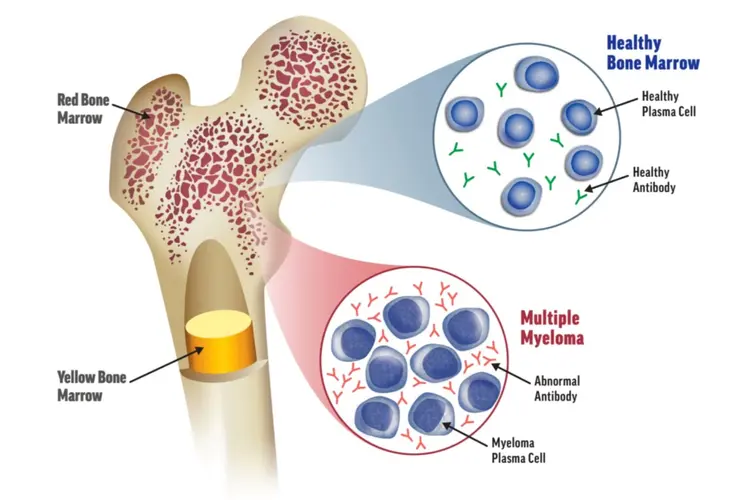Dr. Nakul Dilip Tikare, Associate Consultant – Clinical Haematology, Manipal Hospital Goa
Myeloma, or multiple myeloma, is a form of blood cancer that begins in plasma cells (white blood cells) located in the bone marrow. Plasma cells function to protect you from infections by making antibodies and, in myeloma, uncontrolled growth of abnormal plasma cells leads to overcrowding of healthy cells and makes proteins that are harmful and can damage bones, kidneys, and the immune system.
Symptoms to Watch For
Symptoms often include pain in the bones (most often in the back or ribs), fatigue, frequent infections, unexplained weight loss, and kidney dysfunction. The diagnosis typically requires blood tests, urine tests, a bone marrow biopsy, and imaging tests which may include CT, MRI or Pet scan.
How Treatment Has Changed
Treatment options for myeloma have improved greatly in the past 20 years. Earlier, chemotherapy and steroids were standard. Today, newer drugs and therapies offer better control and longer survival.
Newer Treatments
• Immunomodulatory drugs (eg. lenalidomide) boost the immune system’s ability to fight myeloma.
• Proteasome inhibitors (eg. bortezomib) prevent cancer cells from removing waste, causing them to die.
• Monoclonal antibodies (eg. daratumumab) are lab-made proteins that help the immune system target and kill myeloma cells.
CAR-T cell therapy is an advanced option where a patient’s own immune cells are modified to recognize and destroy myeloma cells. It’s currently used for those with relapsed or resistant disease.
Bispecific antibodies are a newer class of drugs that link immune cells to cancer cells, helping kill them more effectively.
Bone Marrow Transplant
For eligible patients, especially younger ones, a bone marrow or stem cell transplant remains a key part of treatment. Most commonly, this involves collecting the patient’s own stem cells, giving high-dose chemotherapy to destroy cancer, then returning the stem cells to restore the bone marrow. This can lead to longer remissions.
Looking Ahead
Although there is no cure for myeloma at this time, people are positively impacted to live longer and better lives than in previous decades of treatment to myeloma due to the multitude of emerging treatments and innovations. Research continues to develop, creating more enthusiasm in the treatment of myeloma, with less intense and more effective treatments.
If you or someone you know is diagnosed with myeloma, speak with a specialist to understand the best options based on age, health, and disease stage.


